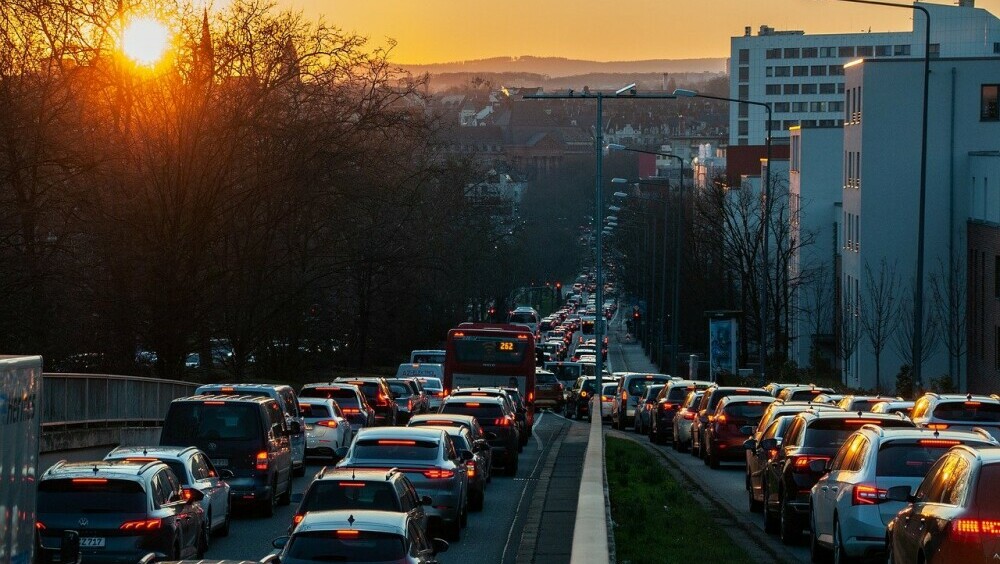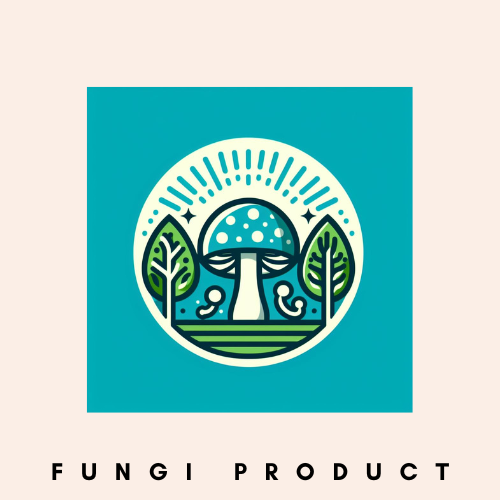I often consider how every choice I make impacts the world around me. This is especially true for the topic at hand: the connection between transportation and the environment. I drive, I fly, and occasionally, I take the city bus. In these routine acts, I am part of a complex web that links my personal life to global environmental issues.
Transportation is indeed a cornerstone of modern society, facilitating commerce, tourism, and everyday mobility. Yet, the vehicles that get us from point A to point B also leave behind a significant environmental footprint. The effects range from localized air and noise pollution to a global increase in ‘greenhouse’ rules concerning gas emissions.
Acknowledging the importance of sustainable transportation is the first step towards a healthier planet. This means rethinking our movement and transit systems to be more eco-friendly.
Public policy and corporate responsibility extended by our individual choices too make the platform within we can evolve into a greener behaviour.
As there is no planet B for our planet I realize the importance of digging deeper into these issues. The next section will examine the specific environmental impacts of transportation, such as the carbon emissions from the multitude of cars on the road. These insights are crucial to understanding why we need to act and how we can move forward responsibly.
The Carbon Footprint of Movement: Transportation’s Environmental Impact
When I turn the key in my car’s ignition, I’m part of a colossal global action with a huge environmental price tag. Every time we drive, fly, or ship goods, we contribute to the planet’s carbon emissions. In fact, transportation is one of the top sources of greenhouse gas emissions worldwide, making it a significant environmental concern.
Cars, trucks, buses, planes, and ships use immense amounts of fossil fuels, and it’s not just about carbon dioxide. These vehicles emit a cocktail of harmful substances, including nitrogen oxides and particulate matter, which deteriorate air quality. Clean air becomes a scarce commodity in areas with heavy traffic, and the health of those living nearby can suffer as a result.
We can’t overlook noise pollution, either. Traffic noise disrupts local wildlife and can be a serious irritant to humans, affecting our well-being and even causing long-term health issues. From the incessant hum of a highway to the roar of a jet overhead, the sounds of transportation are an undeniable environmental nuisance.
It is clear that our transportation choices have consequences that reach far beyond the road, sky, or sea. Recognizing this impact is the first step toward adopting changes that can steer us toward a less polluted, more sustainable future.

‘It is a long way down before having my Apéro in tranquility’
Charting a Greener Path: Innovations in Eco-Friendly Transport
In the face of transportation’s undeniable impact on the environment, innovators and engineers have rolled up their sleeves to craft solutions that promise cleaner, more sustainable ways to move. Among these innovations, electric vehicles (EVs) are perhaps the most visible on today’s roads. EVs emit zero tailpipe pollutants, presenting a stark contrast to their gasoline-powered counterparts. The drive toward electric is gaining momentum with advancements in battery technology that promise longer ranges and faster charging times.
Beyond personal cars, the public transportation domain is experiencing its own green revolution. Cities worldwide are transitioning their bus fleets to electric or hybrid models, reducing emissions in dense urban corridors. Trains are becoming greener with increased investment in electrified rail networks and the development of hydrogen fuel cell-powered locomotives.
Looking to the skies and beyond, the innovations extend to electric airplanes, which are emerging into the arena of short-haul flights. These developments, alongside concepts like the Hyperloop
– envisioning passengers propelled in pods through low-pressure tubes at high speeds-
could one day transform long-distance travel into a swift and eco-friendly affair.
After James Bond 007 we will be the next ‘gliding’ in pipes from one city to another.
As we lean into these technological leaps it remains critical to consider their integration into our current systems. The best tech innovators must be designing comprehensive transport solutions that sync with smart city infrastructures starting what we have today.
Championing efficiency and sustainability and have it integrated in the existing infrastructure is
a very complex challenge.
Policy and Progress: How Legislation Influences Eco-Transportation
DAY BY DAY, legislation grows increasingly crucial in steering the transportation sector towards sustainability. Laws and policies enacted by governments can profoundly shape the infrastructural and economic landscape, dictating the speed and direction of environmental progress.
National and local governments can wield policy as a tool to diminish transportation-related emissions. By setting ambitious targets for greenhouse gas reductions, they place a tangible expectation on industries to innovate and on consumers to adapt.
At the international level, protocols like the Paris Agreement influence national transport policies, compelling countries to commit to emission reduction targets. The ripple effects prompt advancements in fuel efficiency standards, the facilitation of electric vehicle markets, and the expansion of public transit options.
Financial measures such as subsidies for electric car purchases and tax breaks for clean energy use are intended to catalyze a shift to less polluting transport methods. Conversely, penalties and emissions taxes create a financial disincentive for continued reliance on fossil fuels.
Critically, such policies must balance urgency with feasibility. Overly ambitious mandates without adequate infrastructure or market readiness can lead to public pushback or failure to meet targets. Equally, too lenient a policy fails to catalyze the necessary change.
Ultimately, policy acts not just as a set of commandments, but as a dynamic framework for innovation, investment, and public engagement in eco-transportation. By incentivizing the development and adoption of cleaner vehicles and practices, governments play an instrumental role in shepherding an environmentally sustainable future.
The Human Element: Behavioral Changes for Environmental Conservation
When talking about transport and the environment, it’s often easy to focus on the bigger players ‘Out there’. We must not overlook the pivotal role individuals like you and I play in this dynamic. Our daily transportation choices contribute to a wider environmental impact, subtly weaving the fabric of our communities’ air quality and noise levels.
Quite simply, when one person chooses to leave their car at home and cycle to work, it’s a small victory for air quality. Imagine magnifying that impact through hundreds, if not thousands, doing the same. Reducing car usage, particularly for short distances, is a practical step towards lower emissions. Carpooling is another accessible choice. It not only cuts down the number of vehicles on the road, but it equally divides the carbon footprint among its passengers.
It’s not just about less driving. I see an opportunity to endorse public transit as a more sustainable option. Sure, a single bus emits pollutants, but when that bus carries fifty passengers, the per-capita emissions plummet compared to fifty cars with single drivers. It’s the compounding effect that tells the true story.
But, awareness is the first step. Effective campaigns can inform and persuade people to tweak transportation habits. These campaigns must be relatable, tapping into local values and communities’ unique attributes. Education is powerful, often transforming the choices we make and nurturing pro-environment behaviors that align with the collective good.

Education ‘by what means of travel’ the globe is part of the acknowledging
So how does this individual action translate into broader business and economic opportunities? That’s where the thriving intersection of economy and ecology becomes apparent.
Balancing Economy and Ecology: The Business Case for Sustainable Transport
It’s impossible to ignore the intricate dance between economic growth and environmental responsibility. In the realm of transportation, this balance is particularly critical. Businesses are beginning to recognize the immense opportunities that sustainable transport provides, not just as an environmental imperative but as a strategic economic advantage.
Consider the economic incentives that are catalyzing companies to go green with their transportation strategies. Government tax breaks, subsidies for eco-friendly vehicle fleets
and consumer demand for sustainable practices all sweeten the pot for businesses looking to pivot. These incentives not only help offset initial costs but also foster long-term financial benefits.
There are companies that have seamlessly integrated sustainability into their transportation networks, reaping both environmental rewards and financial gains.
Companies like UPS have incorporated alternative fuel and advanced technology vehicles into their fleets, reducing emissions while optimizing delivery routes for maximum efficiency. Similarly, electric car manufacturers are not only revolutionizing personal transport but are also transforming the auto industry’s supply chains by prioritizing sustainability.
This momentum towards green transportation is not only about reducing emissions.
Ther is a need to economic resilience. Embracing sustainable practices can lead to operating cost reductions, enhanced brand reputation, and alignment with global environmental goals, which, in turn, attract investors and customers.
In the long term, investing in environmentally friendly transport infrastructure supports job creation in new industries, reduces healthcare costs by cutting pollution, and ensures a scalable business model that responds to the ever-increasing environmental regulations. Such forward-thinking can future-proof a business, aligning financial success with planetary health.
Roadmap to a Greener Future: Practical Steps and Future Visions
We stand at a pivotal moment in the intersection of transportation and environmental stewardship. While the challenges are significant, the collective actions of individuals, communities, and nations paint an optimistic picture for the future. The ultimate goal is a harmonious coexistence between our mobility needs and environmental conservation.
At the local level, community-based projects showcase the impact of grassroots movements. Initiories like bike-sharing programs and urban green spaces are not just community enhancers but also vital cogs in the larger machine of eco-friendly transport reform.
In terms of urban planning, tomorrow’s cities are envisioned as bastions of sustainability. Concepts such as ’15-minute cities’, where residents can access essential services within a short walk or bike ride, are gaining traction. This, combined with the integration of public transit and green corridors, offers a glimpse into the future of environment-conscious development.
Technological innovation too holds the keys to a transformed transport sector. With continued investment and research, advances in battery technology, fuel efficiency, and renewable energy sources can make the dream of a fully sustainable transport network a reality.
The collective journey towards sustainable transportation is akin to a marathon, not a sprint.
It calls for commitment, innovation, and patience. By taking practical steps today, the vision of an environmentally friendly transport system will no longer be a distant dream but an attainable reality for the generations to come.

Don’t miss the train when it comes to put your part in the quest to sustainable transport
The Role of Fungi Products and Technology in Sustainable Transport
We discussed in the quest for a more sustainable future, the transport sector faces significant challenges. With the industry contributing approximately 14% of global greenhouse gas emissions, innovative solutions are essential.
But where stands Fungi in this story ?
The contribution lies in briging strong, lightweight, and eco-friendly materials indirect or direct involved in all what matters the weight of ‘the package’. But next to bringing light-weight solutions Fungi also brings sustainability as a detoxyfier, water cleaner and detox air pollution.
Fungi, often overlooked, are emerging as a vital component in making transportation more sustainable through their unique properties and applications.
Biodegradable Materials
One of the most promising uses of fungi in the transport sector is the development of biodegradable materials. Fungi, particularly mycelium, the vegetative part of a fungus, can be used to create strong, lightweight, and eco-friendly materials. Companies like Ecovative Design have pioneered the use of mycelium in creating packaging, building materials, and even car parts. Unlike traditional plastics and composites, mycelium-based materials decompose naturally, reducing landfill waste and pollution. This innovation not only minimizes the environmental impact of vehicle production but also offers an alternative to petroleum-based products,
aligning with the principles of a circular economy.
Biofuels
Fungi also play a crucial role in the production of biofuels. Certain species, such as those in the genus Trichoderma, are efficient at breaking down plant biomass into fermentable sugars. These sugars can then be converted into bioethanol, a sustainable fuel alternative. Research has shown that fungal enzymes can enhance the efficiency of biofuel production, making it more cost-effective and scalable. Biofuels derived from fungi are renewable and emit fewer pollutants compared to fossil fuels, contributing to lower carbon emissions in the transport sector.
Pollution Control
Fungi’s ability to absorb and detoxify pollutants, known as mycoremediation, offers a novel approach to managing environmental contamination from transportation. Fungi can degrade hydrocarbons, heavy metals, and other toxic substances found in soil and water near transport hubs and routes. For example, oyster mushrooms (Pleurotus ostreatus) have been used to clean up oil spills. Applying mycoremediation techniques in the transport sector can mitigate the adverse effects of pollution, making transport infrastructure more environmentally friendly.
Lightweight Structures
The structural properties of fungal materials can significantly benefit the transport industry by reducing vehicle weight. Lightweight vehicles require less energy to operate, thereby decreasing fuel consumption and emissions. Mycelium composites are being explored for use in automotive interiors and even aircraft components. These materials are not only lightweight but also possess excellent thermal and acoustic insulation properties, enhancing vehicle performance and passenger comfort.
Sustainable Packaging and Logistics
Sustainability in the transport sector extends beyond vehicles to include logistics and packaging. Fungal materials are revolutionizing packaging, offering biodegradable options that reduce waste. For instance, mycelium-based packaging can replace polystyrene and other non-recyclable materials commonly used in shipping and logistics. This shift not only reduces the environmental footprint of packaging but also promotes sustainable practices throughout the supply chain.
Conclusion
Fungi products and technology are proving to be invaluable in the pursuit of a sustainable transport sector. From biodegradable materials and biofuels to pollution control and lightweight structures, fungi offer versatile solutions that address various environmental challenges.
As research and development in this field continue to advance, the integration of fungal innovations into the transport industry holds the promise of significantly reducing its environmental impact, paving the way for a greener future. By harnessing the power of fungi, we can move closer to achieving sustainability goals and mitigating the effects of climate change.

André Raymond
